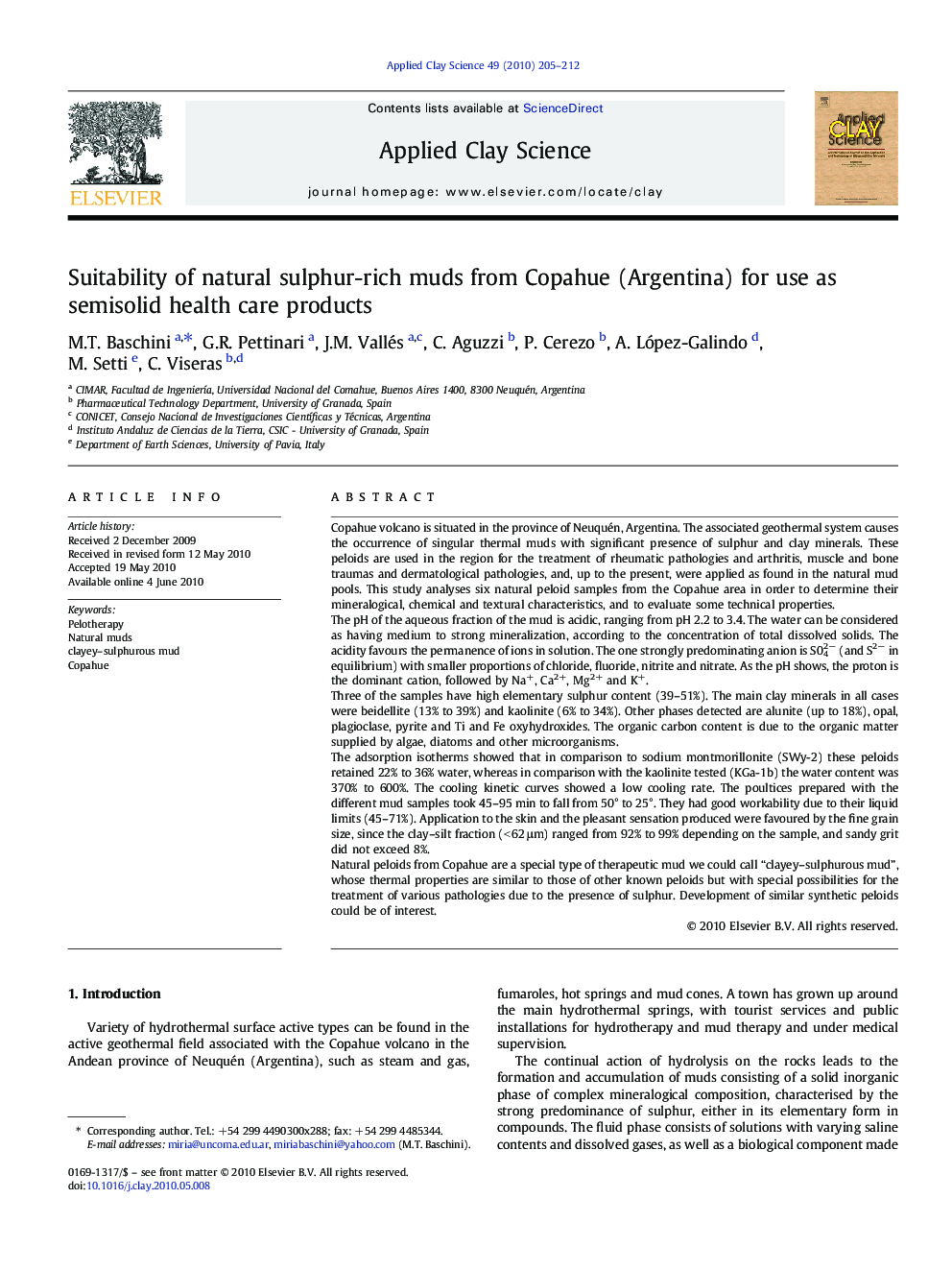| کد مقاله | کد نشریه | سال انتشار | مقاله انگلیسی | نسخه تمام متن |
|---|---|---|---|---|
| 1695856 | 1011878 | 2010 | 8 صفحه PDF | دانلود رایگان |

Copahue volcano is situated in the province of Neuquén, Argentina. The associated geothermal system causes the occurrence of singular thermal muds with significant presence of sulphur and clay minerals. These peloids are used in the region for the treatment of rheumatic pathologies and arthritis, muscle and bone traumas and dermatological pathologies, and, up to the present, were applied as found in the natural mud pools. This study analyses six natural peloid samples from the Copahue area in order to determine their mineralogical, chemical and textural characteristics, and to evaluate some technical properties.The pH of the aqueous fraction of the mud is acidic, ranging from pH 2.2 to 3.4. The water can be considered as having medium to strong mineralization, according to the concentration of total dissolved solids. The acidity favours the permanence of ions in solution. The one strongly predominating anion is S042− (and S2− in equilibrium) with smaller proportions of chloride, fluoride, nitrite and nitrate. As the pH shows, the proton is the dominant cation, followed by Na+, Ca2+, Mg2+ and K+.Three of the samples have high elementary sulphur content (39–51%). The main clay minerals in all cases were beidellite (13% to 39%) and kaolinite (6% to 34%). Other phases detected are alunite (up to 18%), opal, plagioclase, pyrite and Ti and Fe oxyhydroxides. The organic carbon content is due to the organic matter supplied by algae, diatoms and other microorganisms.The adsorption isotherms showed that in comparison to sodium montmorillonite (SWy-2) these peloids retained 22% to 36% water, whereas in comparison with the kaolinite tested (KGa-1b) the water content was 370% to 600%. The cooling kinetic curves showed a low cooling rate. The poultices prepared with the different mud samples took 45–95 min to fall from 50° to 25°. They had good workability due to their liquid limits (45–71%). Application to the skin and the pleasant sensation produced were favoured by the fine grain size, since the clay–silt fraction (< 62 μm) ranged from 92% to 99% depending on the sample, and sandy grit did not exceed 8%.Natural peloids from Copahue are a special type of therapeutic mud we could call “clayey–sulphurous mud”, whose thermal properties are similar to those of other known peloids but with special possibilities for the treatment of various pathologies due to the presence of sulphur. Development of similar synthetic peloids could be of interest.
Journal: Applied Clay Science - Volume 49, Issue 3, July 2010, Pages 205–212